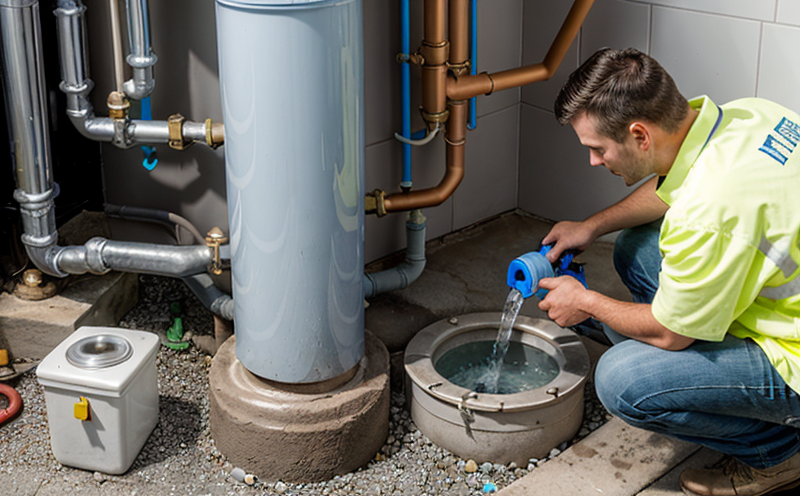EN 1717-6 Contamination Prevention Verification
In the field of building and infrastructure testing, particularly in plumbing and water systems, the prevention of contamination is paramount. This is especially critical given that water serves as a fundamental resource for human health and safety. The European standard EN 1717-6 provides comprehensive guidelines on how to verify the integrity of systems designed to prevent contamination, ensuring that water remains safe for its intended use.
The importance of this standard cannot be overstated. It is critical in preventing a variety of contaminants from entering drinking water supplies and other potable water systems. Contaminants can range from biological substances such as bacteria and viruses to chemical pollutants like heavy metals, pesticides, or disinfection by-products (DBPs). Ensuring that these systems are free from contamination not only protects public health but also upholds the reputation of construction companies involved in projects.
The standard emphasizes the need for a systematic approach to contamination prevention. This involves several key steps: initial design and planning, implementation during construction, verification through testing, and finally, ongoing monitoring post-construction. Each step must be rigorously executed to ensure that the system remains free from contaminants throughout its lifecycle.
The testing process outlined in EN 1717-6 is designed to be comprehensive yet practical. It focuses on specific aspects of plumbing systems such as the materials used, design features, installation practices, and operational procedures. The goal is to identify any potential vulnerabilities that could allow contaminants to enter the system.
Given the complexity and importance of this testing, it's essential for construction professionals to understand not only the theoretical aspects but also practical applications. This includes knowing how to properly prepare specimens, what instrumentation to use, and how to interpret results accurately. By doing so, they can ensure that their projects meet or exceed regulatory requirements.
To provide a more detailed look at this process, let’s delve into some of the key components involved in EN 1717-6 compliance:
- Material Selection: The standard specifies that all materials used must be suitable for potable water applications.
- Design Features: Specific design elements aimed at preventing contamination should be included in the blueprint.
- Installation Practices: Detailed guidelines on how to install components correctly are provided.
- Ongoing Monitoring: Post-construction, continuous monitoring and maintenance plans are recommended.
Why It Matters
The prevention of contamination in plumbing systems is essential for several reasons. Firstly, it ensures compliance with health regulations which protect public safety. Secondly, it enhances the longevity and performance of infrastructure by reducing wear and tear caused by contaminants. Finally, it fosters trust among stakeholders—customers, regulatory bodies, and investors—who rely on these systems to function safely.
The economic implications are significant too. Non-compliance can lead to costly repairs, fines, and reputational damage. On the flip side, adherence to standards like EN 1717-6 can lead to increased business opportunities due to improved customer satisfaction and enhanced safety records.
Scope and Methodology
| Aspect | Description |
|---|---|
| Initial Design Verification | This involves checking the design documentation to ensure it meets all relevant standards. |
| Construction Site Inspection | The site must be inspected before, during, and after construction for any deviations from approved plans. |
| Sampling Procedures | Specific procedures are outlined for collecting samples from various points in the system. |
| Testing Protocols | The testing protocols include both chemical and microbiological analyses to detect any contaminants. |
Customer Impact and Satisfaction
- Better Health Outcomes: Safe water reduces the risk of disease, enhancing overall public health.
- Increased Safety: Systems that meet these standards are less likely to fail under stress or during emergencies.
- Enhanced Reputation: Compliance with international standards can improve a company’s image and standing in the market.
- Cost Savings: Preventative measures reduce the need for costly remediation efforts later on.





